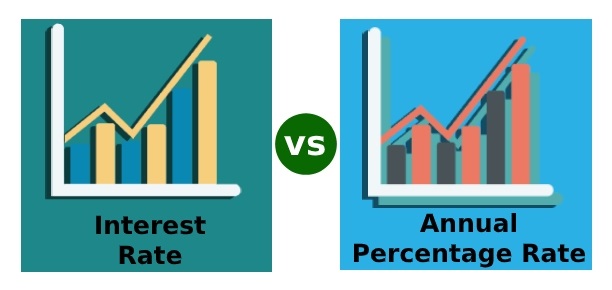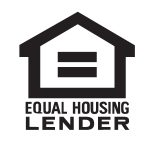Many individuals often confuse the APR & Interest rate, as even though they are both related to the cost of borrowing money, they are calculated differently. We will take a deep dive into the complexities of these two terms and explain in detail how they are different. We will also discuss why APR and Interest Rates are important to consider when taking out a loan.
Read to find out the factors that determine the rate of APR and Interest Rate, such as credit score, the loan term and the type of loan taken. So, join us on this journey to uncover the difference between APR and Interest Rate. You’ll know how to calculate the costs of borrowing money and identify the best loan or credit card offer. Let us help you understand the complicated world of borrowing money and make the best decision for your financial well-being.
What is the Interest Rate?
The interest rate is the amount of money that a lender, such as a bank, will charge a borrower in exchange for using their money.
It’s the percentage of the loan amount that you pay as interest on a loan from a lender for a given period of time. It can be:
- Fixed: The interest rate remains the same throughout the entire loan period.
- Variable: Interest rates may increase or decrease depending on the market rates.
In nutshell, the borrower has to repay the principal amount as well as the accumulated interest. The interest rate is high at the beginning as the principal amount is also higher during the initial phase of loan term. It’ll reduce after paying regular monthly installments.
Your principal balance is high at the beginning of your loan term, and you’ll pay more money toward interest as a result. However, as you chip away at your principal through monthly payments, you owe less in interest and a higher percentage of your payment goes toward your principal. This whole process is known as mortgage amortization.
What is APR?
APR is abbreviated as Annual Percentage Rate and is used to determine the borrowing cost. It is the monthly interest rate that is charged on any outstanding balance. It includes everything from your interest rate, origination fees, and processing fees to all other expenses associated with your mortgage such as:
- Closing costs
- Discount or mortgage points
- prepaid interest
- PMI (private mortgage insurance)
What’s a good APR?
At present, the average good APR for credit cards is around 16%. APR can vary depending on your current credit score.
- If you have a bad credit score or history, you’ll have to pay a high APR. and,
- If you have a good credit score, your APR for a credit card can be low up to 12%.
Note: APRs on some credit cards are variable, they can increase or decrease according to the market rates.
Interest Rate Vs. APR: What’s the difference?
When you are shopping for a loan or credit card, you may have noticed that there is a difference between an interest rate and an APR (Annual Percentage Rate). It’s important to consider both the Interest rate and the APR when choosing the best mortgage loan for you. This difference can be confusing and it’s important to understand the difference between both terms.
The interest rate is the amount charged, expressed as a percentage, which you pay on your loan or credit card balance. It is the amount that is charged for borrowing the money and it doesn’t take into account any additional fees that you may have to pay.
The APR, on the other hand, is the effective interest rate plus any additional fees or costs associated with the loan or credit card, such as closing costs, prepayment penalty fees, etc. It is a more comprehensive number that reflects the total cost of borrowing for the year.
In summary, the interest rate is the cost of borrowing, whereas the APR is the cost of borrowing plus any additional fees or costs associated with the loan.
According to the Truth in Lending Act (TILA), the lender must clearly tell you the APR & interest rate. To know in detail, you can check your Loan Estimate that you’ll get after three days of the loan application and Closing disclosure.
Important: You’ll get your closing disclosure after 3 days of loan closing.
How to Calculate Interest Rates?
In this section, we’ll explain “how are mortgage rates determined?” Interest rates are the amount of money that someone pays to borrow money or the rate of return that someone earns on their investments. Knowing the interest rate helps you determine the total cost of the loan.
It’s up to the lenders to fix a certain percentage of interest rate depending on various factors, especially current market rates, and the economic status of the real estate market.
Calculating interest rates on a loan or investment can be complicated, but there are a few simple steps that you can take to get a better understanding of how these rates work.
Step 1: First, decide what type of interest rate you’re calculating. Interest rates can be fixed, variable, or compounded.
Fixed interest rates are set and do not change over time. Variable interest rates change over time. Compounded interest rates involve interest being applied to principal and accrued interest.
Step 2: Next, determine the principal amount of the loan or investment. This is the amount of money that will be used to calculate the interest rate and is typically the amount borrowed or invested.
Step 3: Third, consider the time frame for the loan or investment and the interest rate. The interest rate is typically quoted annually, and the time frame is typically quoted in years.
Step 4: Finally, calculate the interest rate. This can be done by dividing the interest rate by the principal amount and then multiplying the result by the number of years.
For example, if you borrow $10,000 with a 5% interest rate for 5 years, the interest rate would be 5/10,000 x 5 = 0.25.
How to lower your interest rates?
Here are some ways to lower your interest rate, and hence the total cost of your loan.
Firstly, Improve your credit score to convince lenders that you can easily pay off the loan in the future.
- Pay monthly installments, credit card payments, and bills on time.
- Do not apply for new loans.
- Increase your savings.
Another way to lower interest rates is to choose loans insured by the government. They usually come with low down payment like:
- VA loan
- FHA loan
- USDA loan.
How to Calculate APR ?
Unlike interest rate, APR is not in the borrower’s control. It’s up to the lender to control factors like origination fees, interest rate, broker’s fees, etc. Though you can lower APR in the initial phase such as:
- By considering loan programs with a minimum down payment, and don’t include private mortgage insurance.
- By comparing interest rates offered by different lenders.
To calculate APR, simply divide the annual interest rate by the number of periods in a year.
However, keep in mind that you cannot compare the APR of a 5/1 ARM from one lender with a 30-year fixed-rate mortgage from another lender.
Our Final Verdict on Interest Rate Vs. APR:
Whether you are buying, refinancing a property, it’s essential to understand both the entities. The main difference between an interest rate and an APR is a more effective, and accurate representation of the cost of borrowing money. APR includes all of the expenses associated with a loan, while an interest rate does not. This means that an APR is always higher than an interest rate.
The additional cost includes discount points, private mortgage insurance, and brokerage fees. Make sure to ask your lender about APR and interest rate before closing the loan. We have already discussed multiple ways to lower your interest rate such as by improving your credit history or by considering government-backed loan options.
Now that you know, you can influence the interest rate in some way but not the APR.





